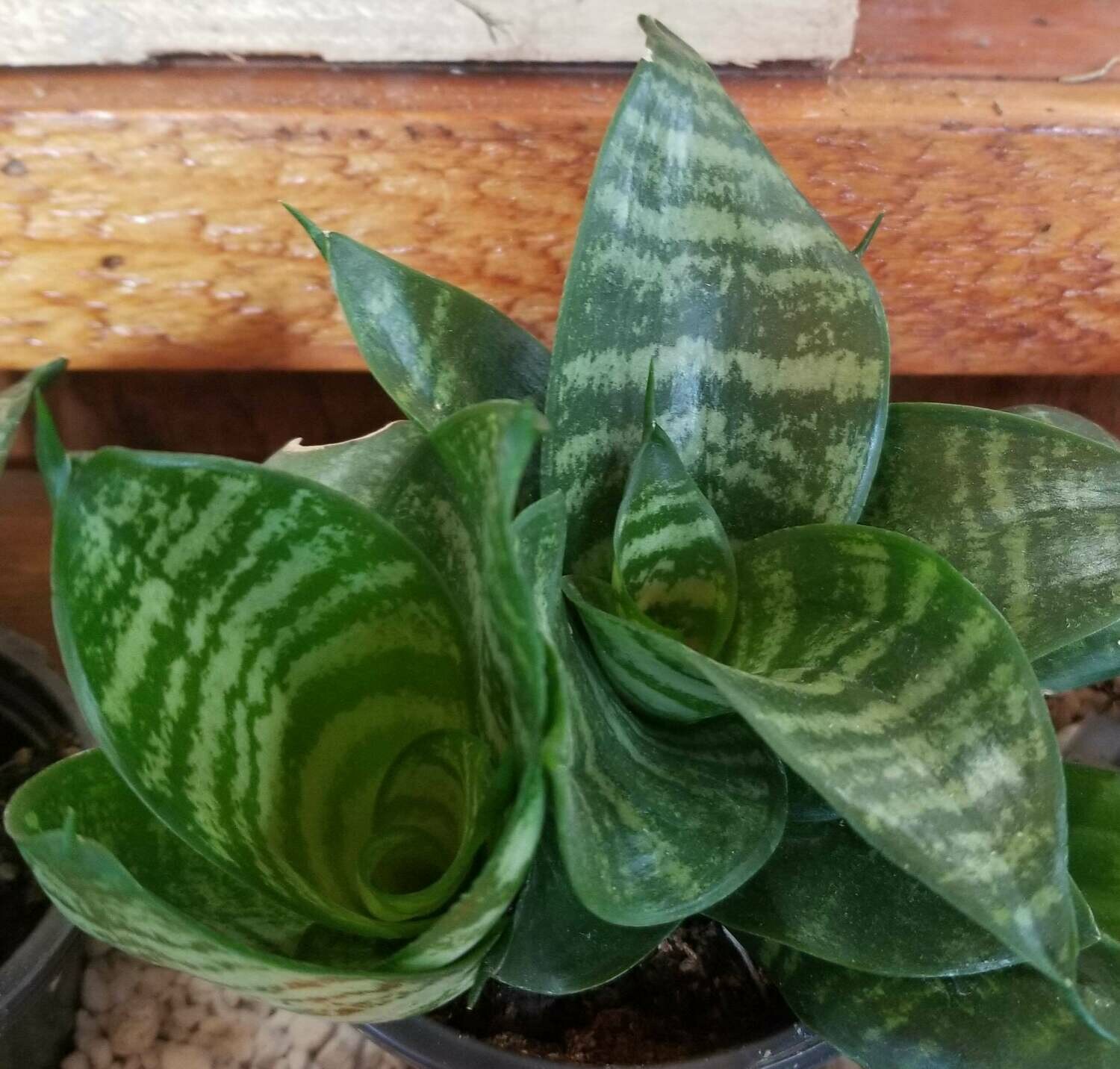Unveiling the intriguing world of the Birds Nest Snake Plant, this guide invites you on a journey to explore its captivating features, symbolism, and practical care tips. With its distinctive appearance and remarkable adaptability, this plant has become a beloved addition to homes and hearts worldwide.
Botanical Description: Birds Nest Snake Plant

The bird’s nest snake plant (Sansevieria trifasciata) is a succulent plant native to tropical West Africa. It belongs to the Asparagaceae family, which also includes asparagus, lilies, and orchids.
The bird’s nest snake plant is characterized by its long, sword-like leaves that grow upright from a central rosette. The leaves are typically dark green with lighter green or yellow variegation, and they can reach a height of up to 2 feet (60 cm). The plant’s root system is fibrous and shallow, which makes it well-suited for growing in pots or containers.
Unique Growth Pattern
The bird’s nest snake plant has a unique growth pattern that is different from most other plants. It grows from a central rhizome, which is a thick, underground stem. The rhizome produces new leaves from its center, which gradually push the older leaves outward. This growth pattern creates a rosette-shaped plant with a dense center of leaves.
Care and Cultivation

The bird’s nest snake plant is a low-maintenance plant that is easy to care for. Here are some tips on how to care for your plant:
Lighting: The bird’s nest snake plant prefers bright, indirect light. Avoid placing the plant in direct sunlight, as this can scorch the leaves.
Watering: Water the bird’s nest snake plant when the soil is dry to the touch. Avoid overwatering, as this can lead to root rot.
Soil: The bird’s nest snake plant prefers well-draining soil. You can use a cactus potting mix or a mixture of potting soil and perlite.
Common Pests and Diseases
The bird’s nest snake plant is relatively pest- and disease-free. However, it can be susceptible to mealybugs, spider mites, and root rot.
Mealybugs: Mealybugs are small, white insects that can infest the leaves and stems of the plant. To control mealybugs, you can use a cotton swab dipped in rubbing alcohol to remove them. You can also use a neem oil spray to repel mealybugs.
Spider mites: Spider mites are tiny, spider-like pests that can cause the leaves of the plant to turn yellow and drop off. To control spider mites, you can use a strong stream of water to wash them off the plant. You can also use a neem oil spray to repel spider mites.
Root rot: Root rot is a fungal disease that can cause the roots of the plant to rot. To prevent root rot, avoid overwatering the plant and make sure that the soil is well-draining.
Decorative Uses and Symbolism

The bird’s nest snake plant has gained immense popularity in interior design due to its unique appearance and adaptability. Its compact size and attractive foliage make it an ideal choice for various decorative applications.
Hanging Plant
The bird’s nest snake plant is a popular choice for hanging baskets or planters. Its cascading leaves create a lush and eye-catching display, adding a touch of greenery to any room. The plant’s trailing stems can reach up to 3 feet in length, creating a dramatic visual effect.
Vertical Greenery, Birds nest snake plant
The bird’s nest snake plant can also be used to create vertical gardens or green walls. Its compact size and ability to thrive in low light conditions make it an excellent option for spaces with limited natural light. The plant’s lush foliage adds depth and texture to vertical structures, creating a vibrant and inviting atmosphere.
Symbolism and Cultural Significance
In various cultures, the bird’s nest snake plant holds symbolic meanings. In Chinese culture, it is believed to bring good luck and prosperity. In some African cultures, it is associated with protection and healing. Additionally, the plant’s ability to purify the air makes it a popular choice for homes and offices, symbolizing health and well-being.
